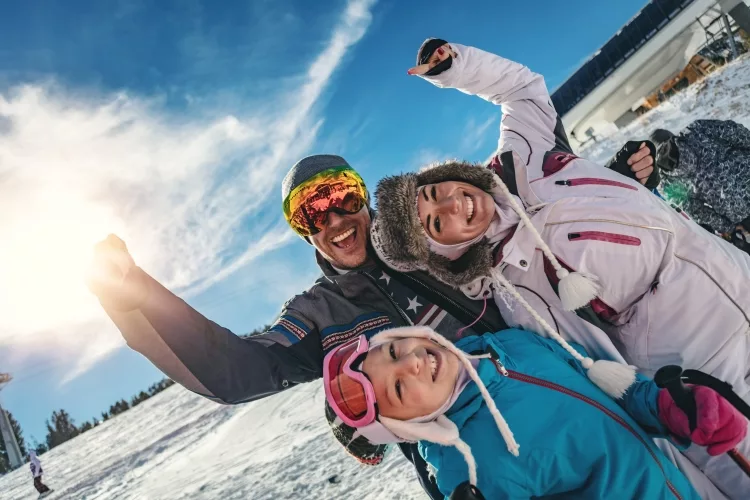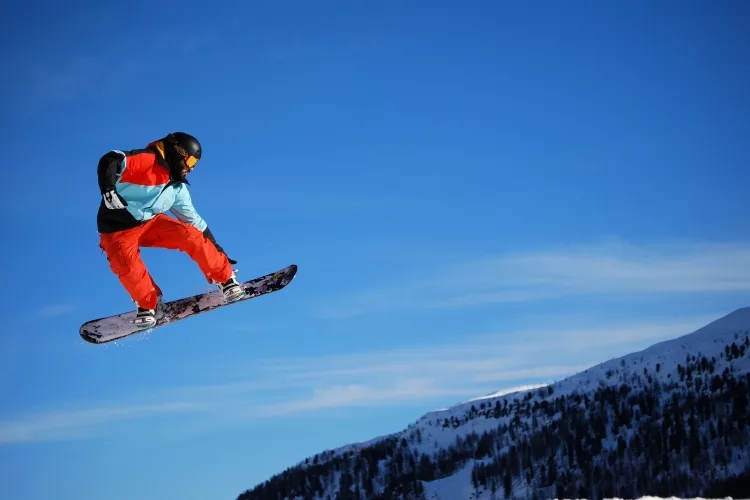Skiing down a mountain with the sun shimmering on snow secured crests, all of them topped with a deep blue, clear sky, must be a standout amongst the most extraordinary feelings on earth…
However, there are some skiing tips every individual should be aware of.
Contents


This takes you from the highest point of the mountain to the base in the most direct way. But, generally, This isn't the safest or most alluring one so it is of the utmost importance to be able exert control and stop before an accident occurs.
snow is elusive! Attempting to adjust oneself while sliding down a mountain isn't simple! You need to be able to adopt a proper position yet one that allows you to move freely.
Clothing is one of the most important skiing things for athletes. Stay warm! It is advised to check the weather forecast every morning before getting dressed to ensure you keep warm and are able to see! Some essential items are:
protect your skin from the wind, sun and cold! Snow mirrors the suns beams (which is awesome for tanning) yet you don't get its energy so pack a lot of sunscreen!
Colours are given a shading code to show the level of difficulty! Green inclines are the least demanding; then comes blue, and red, with black being the most troublesome. Be careful when skiing and avoid it first thing in the morning or very late in the evening!
Accidents may happen. Ensure you get travel insurance that covers winter sports.
I'd say leasing your skis and boots and try to borrow the rest from loved ones. Ski gear is expensive so it is wise to find ways to avoid spending on things that may be worn only a few times.
All rental shops ought to give you skis that suit your ability. Make sure they are 20-30cm shorter than your height - shorter skis are easier to control! On the off chance that the front part of your skis cross while you ski, don't be reluctant to take them back to the rental shop and request some shorter ones!
Rental boots are famously uncomfortable so your goal is to find a pair that fits and is cozy! You ought to be able to move your toes freely and your heels should fit comfortably in the shoe with a minimum amount of slipping. Strolling to and from the inclines and around the bars is frequently less demanding if your boots fit properly, so make sure they are done up when you ski!!
Have them fit as tight as possible around your calf muscles however not too tight over the top of your feet or they will confine the blood stream. Also, try not to tuck your trousers into your boots, as to keep the snow out.
Strapping boards to your feet and descending a mountain may not sound like something worthy but once you learn a couple of fundamentals, it truly is. It's an incredible sport, regardless of what level you are at! Skiing is, however, a sport in which is necessary to learn the basics, so take all the time you need to learn and don't go straight up to the highest point of the mountain, for escaping control and speeding up fast can put people off…
Before opening your boards on, get used to the vibe of your boots! Take a snappy stroll around in them, squat down and stand up tall a few times to feel them. Utilize your poles to rub any snow off the base of your boots before tying them into your skis. I'd suggest having a brisk walk around on one ski before putting the second one on so you get a feeling of it! To get them off, push down on the back of the ties until your heel appears. Your ski pole can help you with this.
I'd suggest utilizing your poles to try yourself around on some level ground before joining the lift line! Here are a couple of skiing tips for all levels of athletes to help you enjoy the feeling as much as I do!
straight run: Next, go only a couple feet up a tender incline. Your shoulders and hands ought to face down the slope, while your skis are sideways. With little steps, point your skis downhill, while putting your weight on your poles. Now, remain on parallel skis, with knees bowed and inclined forward while placing your weight on your poles. When you get there, simply lift your poles off the snow and go!
Gliding wedge: Now it's time to figure out how to control your speed. The most common way is known as "skimming wedge". This is a V-position that is created by sliding both skis tails separated and at an equal distance while keeping your ski tips together. This position creates resistance as you go downhill and backs you off. It is also typical to slowly make the wedge more extensive at you ski straight down the slope until you grind to a halt.
Wedge turn to a stop: You have to understand that a turn can happen with no genuine turning strengths being connected to your body. That implies no winding or inclining of the body where you need to turn. Rather, while floating straight down the slope in a wedge, just put more weight to one side of the ski. The pressure ought to be extremely subtle so that the left ski appears to mysteriously guide you slowly to one side until you halt. It is of the utmost importance that you apply this weight on the left ski while keeping your body still.
Linking wedge turns: Once you have figured out how to control your speed by turning over the slope, the following step is to make progressive turns. Rather than proceeding with a turn until you stop, another turn should begin before you lose all the energy from the first turn. This basically includes an unpretentious change of weight to the next ski, along these lines making it rather a turn into the "turning ski". At the point when turning you should shift your weight to within edge of the past external ski and turn your body to face downhill again for a minute, prior proceeding over the incline. So move your weight onto your right leg when turning left, and onto your left leg when turning right.
 |
 |
 |
 |
Recent Post
Try the new FREE GiveAways Page
Something wrong ? Try refresh this page
Whitelist, remove adblock to see all the secrets. Once done, hit refresh button below.
 |
 |
 |
 |